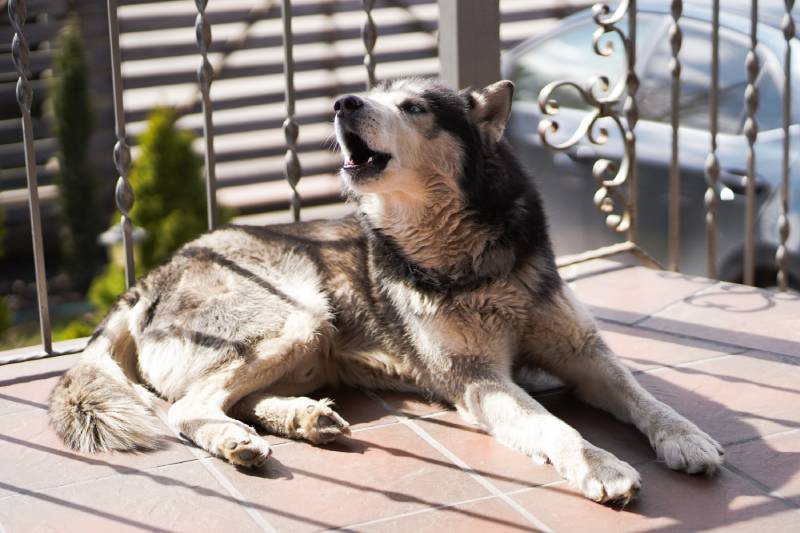How to Stop Your Dog from Barking at the Door: 3 Tips That Work
Updated on

Dogs that bark every time the doorbell rings can be frustrating for dog owners. Don’t get us wrong; certain instances are warranted, however, the barking can be annoying if your dog barks excessively each time the doorbell rings—plus, it can stress your dog out. If you can relate and are looking for tips to stop your dog from barking at the door, you’re in the right place.
In this post, we’ll explore three valuable tips that work in stopping your dog from barking at the doorbell.
The 3 Tips on How to Stop Your Dog from Barking at the Door
1. Desensitize Your Dog
The key to desensitization is to reroute your dog’s way of thinking about the doorbell. For example, your dog’s favorite treat comes in handy during this process. Here’s how: Get a handful of your dog’s favorite treats and show them to him. If your dog loves peanut butter (ensure it contains no xylitol, which is toxic to dogs), put some on your fingers and show it to him. While your dog is licking it off your hands, ring your doorbell. If your dog continues to lick the peanut butter or whatever treats you use, give him praise.
Repeat this step several times. When you feel your dog is more interested in treats than the sound of the doorbell, try ringing the doorbell without a treat, but don’t let him know you are armed with the secret weapon. If he doesn’t bark at the sound, give a treat and tons of praise.
This method may not be effective for all dogs, but it’s a good start.

2. Encourage Your Dog to Go to Their Bed or Crate
We know this sounds strange, but wouldn’t it be nice to know that when a delivery person rings the doorbell to deliver a package, your dog will retreat to his bed and get out of the way? With persistence and consistency, you can train your dog to do exactly that. Ultimately, you are teaching your dog that the doorbell sound is a cue to go to their bed or crate. This method reduces stress for both the humans and the dog, and it prompts your dog to go to his “spot.”
Start by placing treats on their “spot” when the doorbell rings. You may need to enlist the help of another person for this step—one person rings the doorbell, while the other stays back with the treats each time the doorbell rings. This method teaches your dog that with the sound of the doorbell comes yummy treats. Repeat this step as often as needed.
3. Get Your Dog Used to the Stimulus
Most often than not, when a dog barks, it’s because he’s excited and can’t wait to see who is on the other side of the door. One way to teach your dog to get used to the stimulus is by giving him a treat when he stops barking. You’ll have to wait out the barks, but as soon as the person who rang the doorbell leaves, and your dog stops barking, providing a treat will help your dog understand that with silence come rewards.

Why Do Dogs Bark at the Door?
Dogs bark at the door because they are alerting you to someone’s presence—this is especially true if you have a guard dog. However, if you don’t have a guard dog, odds are you don’t care for the barking behavior each time you have a visitor.
Dogs also bark at the door because they feel the need to protect you (especially guard dogs). Or it could simply be because he’s excited to see the visitor or that he’s scared of someone being on your property. Barking at the door is a normal dog reaction, but you can train him not to if you desire by implementing the steps we’ve discussed.

Tips for Success
It can take time to train your dog not to bark at the doorbell, but you can take certain measures to ease the process, especially if you’re having trouble with the training. Let’s check them out.
- Put a sign on your door instructing visitors not to ring the doorbell or knock
- Use a sound machine or some other noise to muffle the sound of the doorbell or knock
- Block your dog’s access to windows or the door itself
- Enlist the help of a dog trainer
Conclusion
Almost all dog owners deal with their dog barking at the door when the doorbell rings or when someone knocks, but that doesn’t mean you have to live with the behavior if you don’t want to. Dogs are amazing beings and can be trained to do (or not do) just about anything.
However, training your dog will take consistency and patience, and remember to never yell at your dog for the behavior, as this will only make matters worse. Positive reinforcement is always best in dog training of any kind.
Related reads:
- 10 Best Puppy Training Treats – Reviews & Top Picks
- 10 Best Low-Calorie Dog Treats – Reviews & Top Picks
Featured Image Credit: dahancoo, Pixabay












